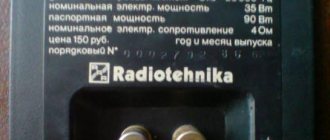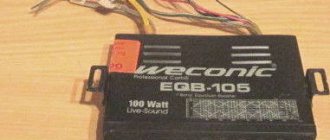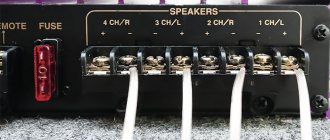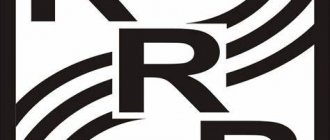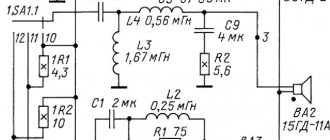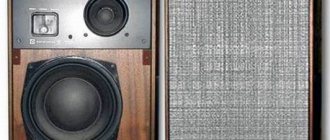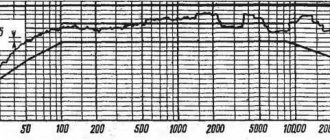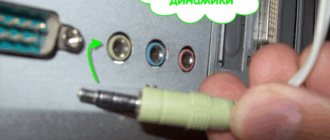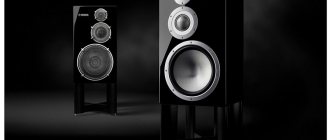This page shows schematic diagrams of Radiotekhnika acoustic systems (Radiotehnika) class S90, circuit 35AC-212, S90, S90B, S90D, S90F, S-90E. S-100D, description, parameters and photos.
Quite high-quality acoustics from Soviet times, after minor modifications and restoration we can say with confidence that it will give a head start to many modern acoustic systems.
If you have similar speaker systems lying around or you bought them somewhere cheap, then put them in order and they will delight you for a long time with powerful bass, rich mids and high frequencies in musical works of different styles and directions!
Acoustic system S-90 (first model)
Rice. 1. Appearance of Radiotehnika S-90 speakers.
The speaker system has two step playback level controls separately for mid and high frequencies in the ranges from 500 to 5000 Hz and from 5 to 20 kHz, respectively.
Both regulators have three fixed positions: “0”, “-3dB” and “-6 dB”. In position “0”, the signal from the crossover filter is supplied to the corresponding head directly. In the “-3 dB” and “-6 dB” positions, the signal is weakened relative to the “0” position by 1.4 and 2 times, respectively. With the appropriate spectral composition of the program, switching the regulator changes the timbre coloring of the sound.
Passport technical characteristics of S-90:
| Nameplate power | 90 W |
| Rated power | 35 W |
| Nominal electrical resistance | 4 ohm |
| Frequency range | 31.5-20000 Hz |
| Nominal sound pressure | 1.2 Pa |
| Dimensions of speakers | 360x710x285 mm |
| Speaker weight no more | 30 kg |
Rice. 2. Schematic diagram of acoustic speakers S90 35AC-212.
AC type:
The removable decorative panel is an acoustically transparent radio fabric stretched over the frame. This panel is attached to the speaker box using burr-type latches. When listening to high-quality programs or when sounding with great power, as well as when it is necessary to control the tone controls of the speaker system, the decorative panel must be removed. The plug for connecting the speaker system to the electric phone amplifier ensures in-phase operation of the two 35AC-1 speaker systems.
The inner surfaces of the walls of the speaker system box (side and top) are covered with sound-absorbing material (cotton wadding). The presence of this material reduces the amplitude of standing waves in the closed volume of the box and thereby ensures the linearity of the frequency response of the sound pressure of the acoustic system in the region of the lower frequencies of the sound signal.
As noted above, the 35AC-1 acoustic system has an acoustic bass reflex; a bass reflex tube made of plastic is attached to the front board of the box. The bass reflex is tuned to a frequency of 30 Hz and provides an increase in the frequency response of sound pressure at this frequency by 3-4 dB, which gives a slight expansion of the range of reproduced frequencies. A metal holder with a small piece of thin and soft fabric is attached to the upper part of the bass reflex pipe to reduce the listening of unwanted overtones.
Speaker system S-90D
Rice. 6. Appearance of acoustic speakers Radiotehnika S-90D.
The speakers have an indication of speaker head overload. The controls located on the front panel of the speaker make it possible to smoothly adjust the sound pressure level of the high-frequency and mid-frequency loudspeaker heads within the range from 0 to minus 6 dB.
There is also a model of the speaker system “S-100D”, it uses a mid-frequency head 30 GDS-3 with MAHID magnetic fluid, which allows you to increase the rated power of the speaker system to 100 W. Otherwise, the designs of the “S-90D” and “S-100D” are similar.
To operate, the speakers must be connected to an amplifier that has the highest (maximum) power at the output of each channel, ranging from 50 to 150 W.
If the OVERLOAD indicators start to light up when the speaker is operating, then you should reduce the level of the input signal supplied to it (by using the volume control in the amplifier to which the speaker is connected).
S-90D technical specifications:
| Nameplate electrical power "S-90D"/"S100-D" not less | 90 W 100 W |
| Rated electrical power | 35 W |
| Nominal electrical resistance | 8 ohm |
| The range of reproduced frequencies is not narrower | 25-25000 Hz |
| Characteristic sensitivity in the frequency range 100-8000 Hz, at a power of 1 W, not less | 89 dB |
| Dimensions of speakers | 360x710x286 mm |
| Speaker weight no more | 23 kg |
The figure below shows a schematic diagram of the S90D speakers.
Rice. 7. Schematic diagram of the speaker system Radiotekhnika S90D.
Description 35AC-1:
The box of the 35AC-1 speaker system is made of 10 mm thick plywood. The low-frequency head is installed on the front board of the box, and the mid-frequency and high-frequency heads are mounted on a decorative false panel made of metal. The false panel, in turn, is installed on the front board of the drawer. The location of the heads on the reflector board determines the directional characteristics of the speaker system. The back wall of the speaker box is tightly fastened, all gaps in the joints of the walls are carefully puttied. The high-frequency and mid-frequency heads are covered with a cover filled with cotton wool. This is necessary to obtain a closed volume in the speaker box for the woofer head, as well as to eliminate the influence of the woofer head on the midrange.
The speaker system is a 3-way closed type with an acoustic bass reflex. Its wooden box contains three round dynamic direct-radiation loudspeaker heads and a filter block. The front side of the box, on which switches for stepwise adjustment of the sound signal volume level at mid and high frequencies are also installed, is covered with a decorative panel. The acoustic system uses the following loudspeaker heads: Gr1 low-frequency type 30GD-1-25 ; Gr2 – mid-frequency type 15GD-11A-120 and Gr3 – high-frequency type 10GD-35-3000 . All loudspeaker heads are connected taking into account the polarity of their voice coil terminals to ensure that they operate in phase. Audio frequency voltage is supplied to each head through the corresponding section of the filter block, which determines the frequency band (channel) in which this head operates.
Design
The body is made in the form of a rectangular, non-collapsible box made of chipboard, veneered with valuable wood veneer. The wall thickness is 19 mm, the front panel is plywood 22 mm thick. At the joints of the housing walls, elements are installed on the inside that increase the strength and rigidity of the housing.
The heads are framed by two decorative overlays, made of white or black plastic. One cover frames the midrange and tweeter, as well as the upper half of the front panel, the other – the woofer head and the lower half of the front panel of the speakers.
The heads are protected by metal mesh. Each of the overlays is secured with six decorative screws. The midrange head is isolated on the inside from the total volume of the housing by a special plastic casing in the shape of a truncated cone. The LF, MF and HF heads are located on the front panel along the vertical axis. The nameplate at the top of the speaker shows the frequency response curve and gives the name of the speaker. In the right corner of the front panel there are speaker overload indicators by channel, and in the lower part there is a rectangular bass reflex hole, 108x35 mm in size and tuning frequency of 25 Hz.
On the rear wall of the speaker there is a nameplate with the main characteristics and a block with clamps for connecting the connecting cord, as well as sound pressure level controls at medium and high frequencies.
The internal volume of the speaker is 45 liters. To reduce the influence on the frequency response of sound pressure and the sound quality of the speaker resonances of the internal volume of the housing, it is filled with a sound absorber, which is mats of technical wool, covered with gauze.
Cup for midrange speakers:
Bass reflex S-90B
Internal volume – 1 l. The hole area is 37.4 cm2. Equivalent length 267 mm. A foam ring 70-80 mm wide and 10 mm thick was attached to the inside of the bass reflex pipe. Height above the edge of the pipe is approximately 15 mm:
Inside the case, on one board, there are electrical filters that ensure separation of the speaker bands. The crossover frequencies between LF/MF are 750 Hz (±50 Hz), between MF/HF—5000 Hz (±500 Hz). The design of the filters and the overload indication unit uses resistors such as BC, MLT, SP3-38B, S5-35I, PPB, capacitors such as MBGO-2, K50-12, K75-11 and inductors on plastic cast frames.
